
Australian Journal of Chemistry
Volume 69 Number 11 2016
RESEARCH FRONT: Young Scientists Advancing Green Chemistry
CH16022Development of Lignocellulosic Biorefinery Technologies: Recent Advances and Current Challenges

Biomass deconstruction and conversion of sugar and lignin to high-value products are the essential steps in the implementation of next-generation lignocellulosic biorefineries. Understanding the interplay between conversion processes and the structure of lignocellulosic feedstocks is a critical point, warranting the development of feedstock engineering techniques and advanced characterization methods, in tandem with the deployment of tailored deconstruction and upgrading processes.
CH15743Practical Isolation of Asperuloside from Coprosma quadrifida via Rapid Pressurised Hot Water Extraction

Multigram quantities of asperuloside, a glycoside natural product, have been isolated from Coprosma quadrifida in a time-efficient and practical manner via rapid pressurised hot water extraction employing an unmodified household espresso machine. By this approach one of the highest yields of asperuloside from a plant species was obtained.
CH16144Polyanhydrides: Synthesis, Properties, and Applications
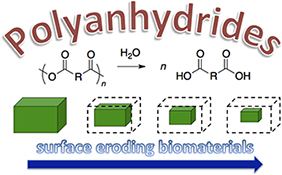
Polyanhydrides are a fascinating class of degradable polymers that have application in drug delivery, stimuli-responsive materials, and novel nanotechnologies because of their degradability and capacity to undergo surface erosion. This review examines approaches for polyanhydride synthesis, thermomechanical properties, biocompatibility, and hydrolysis and degradation processes.
CH16151A New Technique for Studying Vapour–liquid Equilibria of Multi-Component Systems
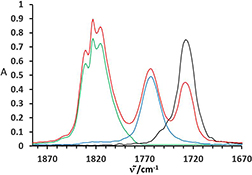
A new Fourier transform infrared gas-phase method for measuring the vapour pressure of each component of a poorly volatile mixture, and determining the vapour phase composition for each system, is described. The method has been validated using two standards, and a Raoult’s plot surface of a ternary system is reported as proof-of-principle.
CH16074Hydrophilic Magnetite Nanoparticles Enhance Anticancer Activity of Anthracyclines In Vitro
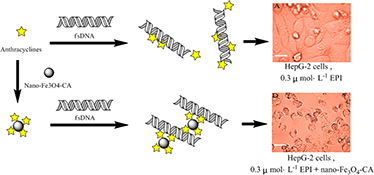
Citric acid-coated magnetite nanoparticles Fe3O4 (nano-Fe3O4-CA) interacted with anthracyclines, and the aggregates (nano-Fe3O4-CA-drug) formed. Further studies indicated that the interactions between them were electrostatic and hydrophobic forces. Additionally, the cytotoxicity of nano-Fe3O4-CA-drug was investigated by cytotoxicity experiment and cell morphology study, which indicated that the nano-Fe3O4-CA-drug has a lower cytotoxicity than anthracyclines.
CH16122Aggregation Behaviours of Surface-Active Ionic Liquids 1-Alkyl-3-methylimidazolium Bis(2-ethylhexyl)sulfosuccinate
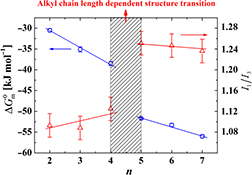
An alkyl chain length dependent structure transition was found in [Cnmim][AOT] aqueous solutions, which was induced by the penetration of longer alkyl chains into the aggregate.
CH16091Two Different Barium(II) 2D Coordination Polymers Constructed with Pyrazine-2,3-Dicarboxylate: Synthesis, Crystal Structures, and Thermal Decomposition to Barium(II) Carbonate Nanoparticles
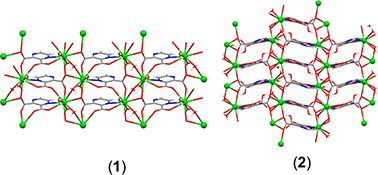
Two barium(II) 2D coordination polymers, {[Ba(µ-H2O)(H2O)2(µ-pyzdc)]}n (1) and {[Ba(H2O)2(µ-Hpyzdc)(Hpyzdc)] 2H2O}n (2) (pyzdcH2 = pyrazine-2,3-dicarboxylic acid), were prepared by reaction of barium(II) chloride dihydrate and pyzdcH2 under slightly different pH values. The barium(II) ion has distorted bicapped square antiprismatic coordination geometry in 1 and distorted tricapped trigonal prismatic geometry in 2.
2H2O}n (2) (pyzdcH2 = pyrazine-2,3-dicarboxylic acid), were prepared by reaction of barium(II) chloride dihydrate and pyzdcH2 under slightly different pH values. The barium(II) ion has distorted bicapped square antiprismatic coordination geometry in 1 and distorted tricapped trigonal prismatic geometry in 2.
CH16169Substituted Carbazoles – A New Class of Anthelmintic Agent

A series of novel carbazoles were synthesized based on structural modifications to lead carbazole 1; several analogues were subsequently demonstrated to exhibit anthelmintic activity both in vitro (H. contortus) and in vivo (H. polygyrus).
CH16102Novel Thymohydroquinone Derivatives as Potential Anticancer Agents: Design, Synthesis, and Biological Screening
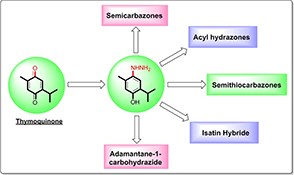
Three series of THQ-based derivatives were synthesised and evaluated for their anticancer activity against a panel of cancer cell lines. Initial screening revealed that compounds 5d and 6 exerted better activity against MCF-7 than TQ, with IC50 values of 9.6 and 10.0 μM, respectively. These compounds were able to elicit apoptotic cell death through activation of caspase 3/7.
CH16150Vibrational Spectroscopic Characterization and DFT Study of Palladium(II) Complexes with N-Benzyliminodiacetic Acid Derivatives
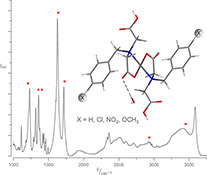
Palladium(II) complexes with N-benzyliminodiacetic acid derivatives, RN(CH2COOH)2 (RidaH2; R = benzyl, para-chlorobenzyl, para-nitrobenzyl, or para-methoxybenzyl), were prepared and characterized by infrared spectroscopy and thermal analysis. Two types of complexes, dihydrates [Pd(RidaH)2]·2H2O and anhydrous complexes [Pd(RidaH)2], were successfully distinguished on the basis of their infrared spectra with the aid of density function theory calculations at the BP86/6–311+G(d,p) level of theory with SDD pseudopotentials.
CH16176A Colorimetric Approach towards Polycyclic Aromatic Hydrocarbon Sensing
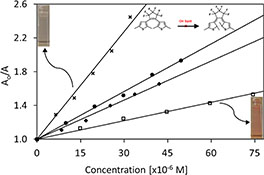
The colorimetric sensing of polycyclic aromatic hydrocarbons (PAHs) was achieved using a photochromic compound. This detection technology was highly sensitive (by absorbing UV radiation) and selective (using different excitation wavelengths). PAH mixtures were successfully identified, allowing fast in-field identification of spilled oil sources.
CH16110Synthesis, Crystal Structure, and Theoretical Calculations of Two Cobalt, Nickel Coordination Polymers with 5-Nitroisophthalic Acid and Bis(imidazol) Ligands
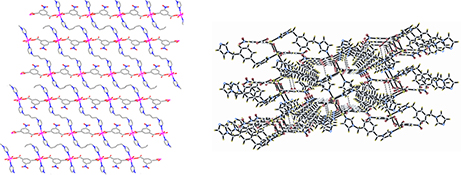
Two new complexes based on 5-nitroisophthalic acid (NIPH) and bis(imidazol) ligands (bimb, mbix), namely, [Co(NIPH)(bimb)(H2O)]n (1) [Ni(NIPH)(mbix)]n (2), have been successfully synthesised under hydrothermal conditions.
CH16050Kinetics and Mechanism of Oxidation of d-Penicillamine in Acidified Bromate and Aqueous Bromine

Oxidation of the biologically active compound d-penicillamine (Depen) by acidic bromate has been studied. It is oxidized as far as its sulfonic acid. ESI spectroscopy shows that Depen is oxidized through addition of oxygen atoms on the sulfur centre to successively yield sulfenic and sulfinic acids before the product sulfonic acid.
CH16072Electrochemical Investigation of Gold Nanoparticle-Modified Glassy Carbon Electrode and its Application in Ketoconazole Determination

Ketoconazole (KCZ) is an antifungal compound and an active ingredient of anti-scaling shampoos and skin ointments. In this work, the cyclic voltammetric behaviour of KCZ was studied with a gold nanoparticle (AuNP)-modified glassy carbon (GC) electrode.



